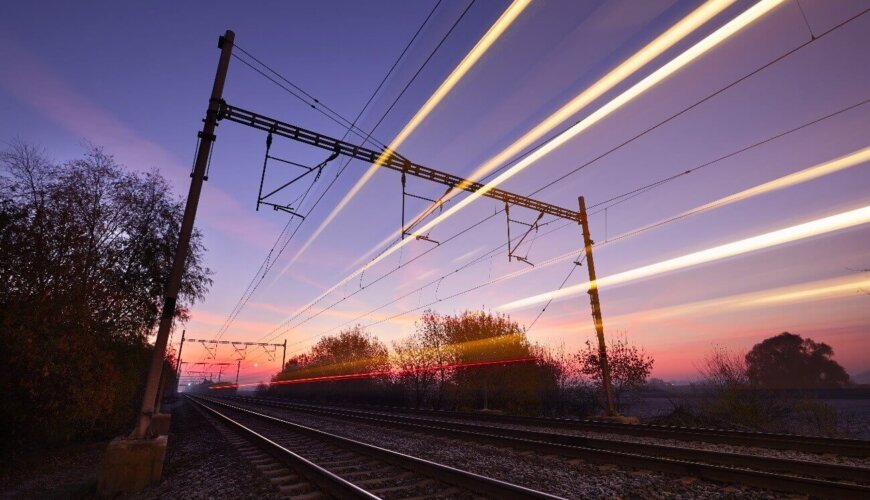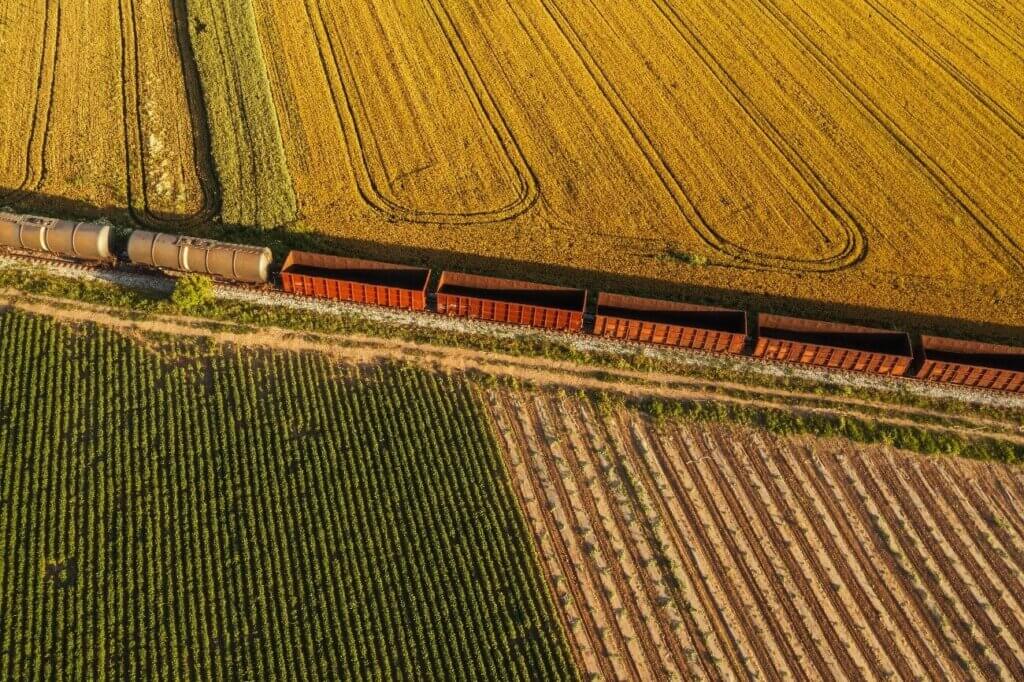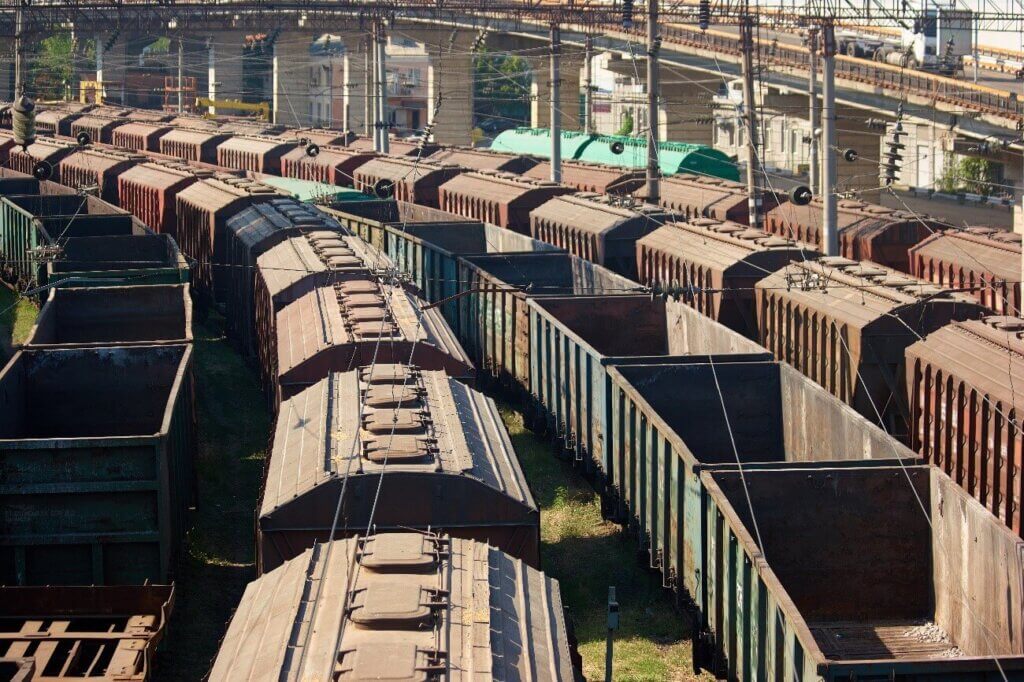
Rail freight transport: all about it
For a country of dimensions like Brazil, rail freight transport is an excellent option, given its capacity to transport large quantities of bulk products, with energy efficiency and safety.
The advantages of this modal increase with the specialized corridors, which allow the development of specific sectors outside the railroad line, such as industries and agricultural producers.
However, after its heyday, rail transport did not keep up with the transformations generated by the growth of the internal market and the accelerated industrialization of the 20th century. Its disuse was also due to the preference for road transport, which raised more investments and generated a dependence on transport matrices in Brazil.
However, the current scenario is that rail transport is undergoing a transformation based on long-term investment,under a public project to integrate land and maritime transport modes.
See everything about rail freight transport in this article:
Content Index
Importance of rail freight transport

Railroads revolutionized transportation in the 19th century, as they "shortened" the distances between industrial production centers and their market, which also provided development in several sectors that contributed to the economic growth of the countries that joined to this mode of transport.
With Brazil it was no different, as its first railroad was built in 1854, in Rio de Janeiro and opened doors for other railroads to be installed on national soil, to the point of stimulating the growth of coffee production, the largest product. contribution to the Brazilian economy at the time.
The Mauá Railroad, as the first railroad was called,was the kick-off for the railroad transport of cargo to take large steps towards development in such a way that until the 1930s, the railroad mode was predominant even for urban transport, contributing to the growth of cities along the lines, in the interior of the states.
What motivated so much investment in trains is their ability to transport tons of products, with high efficiency over long distances, in addition to safety and low energy cost, compared to trucks.
However, with the investment in highways since the beginning of the 20th century, the railroad network went through a contraction until investments fell, with many of them deteriorating, resulting in an imbalance that burdens the road modal until today.
Types of cargo

Even with the imbalance between national transport matrices, rail freight transport is still relevant for the flow of agricultural, steel, industrial products and even for export, since the rail network gives flow to national ports.
Currently, there is a demand for rail transport of low added value cargo, which depend on vehicles that support high weights, moving them over medium and large distances.
Currently, there is a demand for rail transport of low added value cargo, which depend on vehicles that support high weights, moving them over medium and large distances.
- Cement
- Lime
- Limestone
- Iron ore
- Clinker Cement
- Mineral coal
- Containers
- Oil derivatives
- Steel products
- Grains
The main drivers for investment in railroads at the moment are sugar, with 50% of its production circulating by trains, and iron ore, with 92%. According to ANTT, in 2019 exports benefited from trains, which transported 40% of agricultural products to Brazilian ports.
Investments in the railroad mode

The role attributed to rail freight transport for many years has been to return to its power, which has declined since the beginning of the 20th century. railroad concessions represented a relief to the government during the 1990s, when the entire country's network was damaged, with inefficient services and an increase in public debt.
With investments from the private sector, through concessions, rail freight transport increased its capacity, reaching the sixth largest network in the world. However, its productivity and density still fall short of the main international railroad systems.
The expectation is that growth will be fostered by more private sector investment, to increase the railroad network, integrate the different modes of land transport,insert non-dependent cargo (general cargo and liquid bulk), regulate the technology and materials that make up the trains and rails, among other benefits.
With the initiative of the Federal Government and the Partnership and Investment Project (PPI), two important railroads are in a growth phase through concessions. The first is the East-West Integration railroad (Fiol), which granted the right to operate the superstructure to Bahia Mineração in a long stretch, in April this year.
It is expected that by 2023, another two sections will be auctioned to companies in the cargo rail transport sector. Along with Fiol's growth, Ferrogrão will expand into an even larger project, with the expectation of linking agricultural commodities from the north of Mato Grosso to the ports of Pará, with a forecast of R$ 20 billion invested.
Rail freight transport in 2021

According to a survey by the National Association of Rail Transport (ANTF), in March 2021, the national railroads increased their transported volume by 15%, compared to the same month of the previous year.
According to a survey by the National Association of Rail Transport (ANTF), in March 2021, the national railroads increased their transported volume by 15%, compared to the same month of the previous year. This growth indicator is accompanied by the increase in performance, measured per ton per useful kilometer (TKU), which also jumped to 30.1% if we compare March this year with the same month in 2020. For ANTT, the most recent concessions have a direct impact on the flow of internal products.
Vale's Carajás Railroad (EFC) and MRS Logística concessions supported the growth of rail freight transport in the iron ore sector, while agricultural bulk was mainly served by the Centro Atlântica Railroad (FCA) and the Paulista, North and South networks of the Rumo Logística company.
Thus, ANTT pointed out that, also in March, the main products that moved the rail freight transport the most were soy, steel products, fuels, iron ore, sugar and cellulose, compared to its performance in February.
Conclusion
Rail freight transport has already gone through fluctuations in relation to its condition and influence on the distribution of internal products, now having a necessary reformulation to achieve a more refined and competitive transport system, which interconnects the different types of vehicles and develops the Brazilian economy again.
Searchs:
https://www.bndes.gov.br/wps/portal/site/home/conhecimento/noticias/noticia/ferrovias
https://portogente.com.br/portopedia/112739-ferrovias-importancia-para-o-transporte-de-carga
https://portogente.com.br/noticias/dia-a-dia/108094-diversificacao-da-matriz-de-transporte












